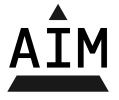
Self efficacy refers to an individual’s belief in his or her capacity to execute behaviors necessary to produce specific performance attainments (Bandura, 1977, 1986, 1997).
Table of Contents
- Abstract
- Self efficacy
- Self efficacy Theory
- Self efficacy Levels
- Factors affecting Self efficacy
- Sources of Self efficacy
- Methodology
- Recommendations
- References
Abstract
Self efficacy is the ability of someone to arrange and execute for the accomplishment of a task up to its maximum. Sometime one possess the capabilities to perform a task but due to the lack of confidence or any other reason they are unable to execute it. Objective of this research to arrange and analyse the available literature to find out and extract word clouds for sources of SE, SE theory and levels of SE. NVIVO 11 Plus was applied to generate the words cloud for exact match, specialized match and generalized match. Finally, conclusions were drawn and recommendations were made. It was concluded that it can be improved and enhanced. Institution and community has to arrange different gathering for learners and people.
Read More: Appraisal of Self-efficacy
Self efficacy
The concept of SE is that if someone asks to contribute the education fund of a college but the condition is to swim 10 laps in a pool. The person will surely try to do it because the person thinks that he/she can do it but when someone asks to bring increase in the tuition rupees but now the condition is to swim with in English Channel. This time the person will think about the possibility as now the task is difficult as compare to the previous one. In this case the person will go for it if have a good or outstanding swimming ability but if the swimming ability of the person is average so it will not be easy to go for it. Its shows that it is the belief of someone for the successful execution or completion of a task. So it is a theory and also a construct for the social cognitive theory………
Self efficacy Theory
The theory of SE consisted of four factors: mastery experiences (past success or failure in a particular area), vicarious experiences (observing others who are like us in success or failure), verbal persuasion (encouragement from others) and somatic and emotional stage (sweaty palms or relaxed responses taken as signs of the ability to do the task) (Bandura, 1994)…………..
Read Also: Self-efficacy A Predictor of Success
Self efficacy Levels
There is evidence that high sense of SE supports motivation, even when the feeling of efficacy is unrealistically high. Children and adults who are optimistic about the future, believe that they can be effective and have high expectation or more mentally and physically healthy, less depressed and more motivated to achieve.
Factors affecting Self efficacy
It depends on students’ previous record; teachers’ message given to the students; and success and the failure of others effecting students’ SE…………..
Sources of Self efficacy
It plays a very vital role in achieving the goals in the life of individual. If someone want to increase the level of SE of a person there must be specific sources with the help of which it’s become possible to engage the learners for the purpose of improvement of it. This will not only help to know better about one’s SE but also to increase and properly arrange the SE. With the help of this it will be easy not only to guide the learner but even to nourish their abilities in term of SE. Family, peers and schools are the sources of SE………………..
Methodology
To deal with the objective of the study i.e. to arrange and analyse the available literature to find out and extract word clouds for sources of self-efficacy, self-efficacy theory and levels of self-efficacy, NVivo 11 was applied for visualizing the data in the form of word cloud…………..
Recommendations
On the basis of visualization of data, a way forward was recommended.
- Different settings and gatherings can be arranged to improve self-efficacy. Parents for their children, teachers for their students and school leaders has to arrange in community and environment.
- Different challenging tasks and programs may be arranged to aware and improve the self-efficacy in the institution by the managers and their team.
- Research has to be conducted for the proper identification of the levels of self-efficacy.
- Future research can be conducted by selecting different techniques of Nvivo.
- Research can be replicated by other researchers by taking other distinct variables of self-efficacy.


Can you be more specific about the content of your article? After reading it, I still have some doubts. Hope you can help me.
At the beginning, I was still puzzled. Since I read your article, I have been very impressed. It has provided a lot of innovative ideas for my thesis related to gate.io. Thank u. But I still have some doubts, can you help me? Thanks.
I may need your help. I tried many ways but couldn’t solve it, but after reading your article, I think you have a way to help me. I’m looking forward for your reply. Thanks.
I don’t think the title of your article matches the content lol. Just kidding, mainly because I had some doubts after reading the article. https://www.binance.com/ru-UA/register?ref=FIHEGIZ8
Your article helped me a lot, is there any more related content? Thanks! https://accounts.binance.com/lv/register-person?ref=RQUR4BEO
Can you be more specific about the content of your article? After reading it, I still have some doubts. Hope you can help me. https://accounts.binance.com/it/register?ref=B4EPR6J0
Your article gave me a lot of inspiration, I hope you can explain your point of view in more detail, because I have some doubts, thank you.
Your article gave me a lot of inspiration, I hope you can explain your point of view in more detail, because I have some doubts, thank you.
Thank you very much for sharing, I learned a lot from your article. Very cool. Thanks. nimabi
Your point of view caught my eye and was very interesting. Thanks. I have a question for you. https://www.binance.info/ru/join?ref=S5H7X3LP
Can you be more specific about the content of your article? After reading it, I still have some doubts. Hope you can help me. https://www.binance.info/tr/join?ref=JHQQKNKN
Your article helped me a lot, is there any more related content? Thanks! https://www.binance.com/kz/join?ref=T7KCZASX
Your point of view caught my eye and was very interesting. Thanks. I have a question for you. https://www.binance.com/sl/register?ref=IQY5TET4
Your point of view caught my eye and was very interesting. Thanks. I have a question for you. https://www.binance.com/tr/join?ref=T7KCZASX